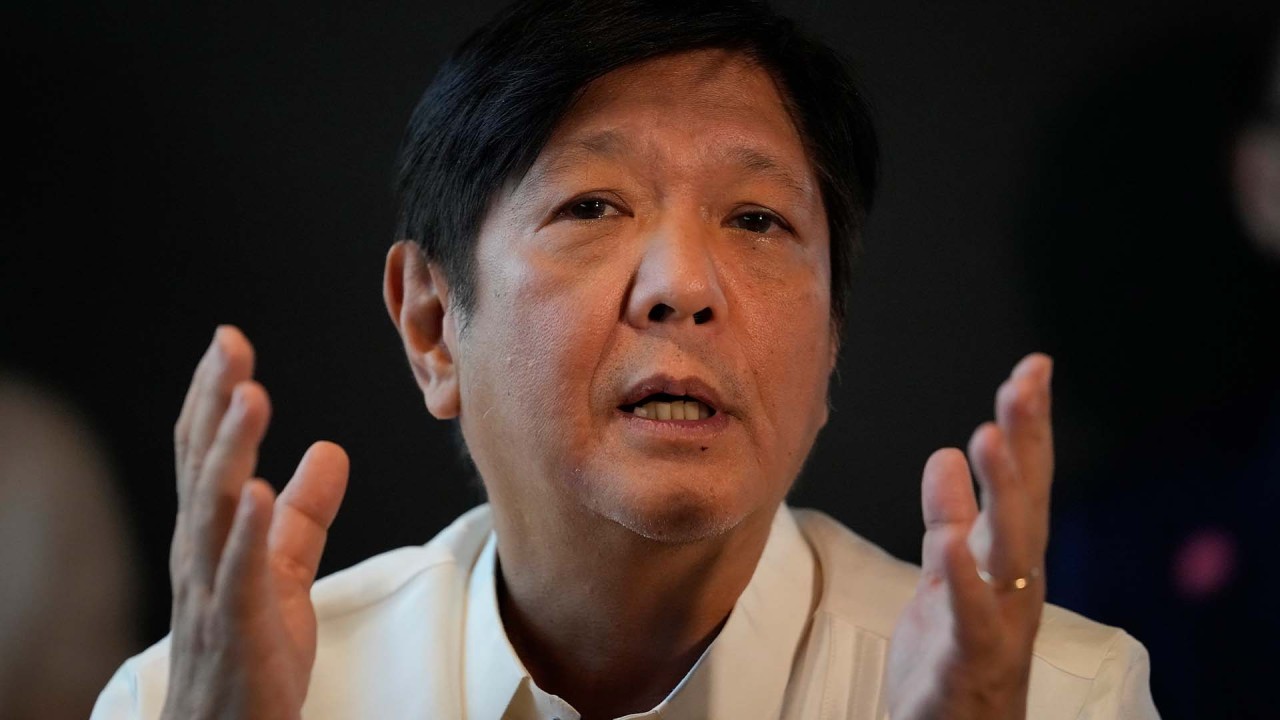
Philippines’ first sovereign fund slammed by critics: ‘our children will be buried in debt’
- Supporters of the US$8.9 billion Maharlika Investment Fund say it will attract the foreign investors needed to pump-prime one of Asia’s fastest-growing economies
- But analysts say there are many ‘red flags’, including its funding sources, and lack of checks and balances at the Maharlika Investment Corporation
As the fund was approved by Congress last week, Senate President Juan Miguel Zubiri jubilantly told reporters its flagship project would be the 32km ‘Manila Bay’ toll bridge between Bataan and Cavite, a US$3 billion (175.7 billion pesos) project.

The fund will be administered by the Maharlika Investment Corporation (MIC) with an authorised capital of US$8.9 billion.
Of that, 125 billion pesos (about US$2.2 billion) would be subscribed and paid up by the Landbank of the Philippines (50 billion pesos), with same amount matched by the national government from the Central Monetary Authority, Bangko Sentral ng Pilipinas, gambling revenues and sale of state assets.
The remainder will come from the Development Bank of the Philippines, according to details published on the Senate website.
Controversy and concern have dogged the fund.
Initially public and private pensions were identified as sources of the US$2.2 billion seed capital. But as outcry erupted, President Marcos Jnr ultimately insisted retirement funds would not be tapped.
Yet “red flags” remain, according to retired government officials and risk analysts, regarding funding sources, the politically-exposed corporate structure of MIC, as well as the potential for risky investments to damage bank holdings.
The nine-member MIC board will be headed by the Secretary of Finance, and includes three independent directors from the private sector, regardless of citizenship.
The measure gives it broad powers to invest including in “unlisted equities”, form joint ventures and issue bonds.
As anxiety rippled out at the big move into sovereign wealth investments, National Treasurer Rosalia de Leon issued an appeal over the weekend to Landbank depositors not to withdraw their money, dismissing reports it could collapse once invested in Maharlika.

However, Enrico Villanueva, a veteran retired risk officer in local and foreign banks, said the two state-owned banks seeding capital to the MIC may still face negative consequences.
“Their subscription is considered a deduction from their capital [and] effectively their risk capital is reduced. If reduced, their ability to absorb losses is impaired,” he told This Week in Asia on Friday.
Landbank, the country’s second-largest bank in terms of assets in 2021, would still be able to meet the minimum capital adequacy ratio (CAR) but could experience “capital pressure”.
But Villanueva warned the Development Bank of the Philippines was more exposed and could end up dipping under its CAR – a recognised measure for safe levels of bank holdings.
In the Philippines, CAR is set at 10 per cent of total risk assets, which include loans and investments.
Critics also question the idea of creating a sovereign wealth fund which trumpets “surpluses” in revenues in a country of 114 million people which posts routine budget overruns.
The government has no “surplus” funds , said Diwa Gunigundo, the central bank’s newly retired deputy governor, and in fact “every year [it] incurs a budget deficit”.
Marcos Jnr’s eldest sister, Senator Imee Marcos, did not cast her vote on the fund approval and has joined the chorus of doubters.
“I don’t feel any [revenue] windfall right now, only utang (debt),” she told reporters on May 29, adding she felt “nervous” over the hasty approval of a bill.
“Our children will be buried in debt,” she said.
Dangerous gamble?
The bill’s main sponsor, Senator Mark Villar, whose family’s US$8.6 billion net worth comes close to the fund’s value, has assured senators it would attract the foreign investors needed to pump-prime an economy already growing at one of the fastest rates in Asia.
“There was an appetite internationally to make investments in the country but there was no medium,” he said, explaining the fund is motivated by the need to reduce poverty, create jobs and promote growth.
It is “a good idea”, Jonathan Ravelas, retired chief market strategist and former first vice-president of the Philippines’ largest bank BDO, told This Week in Asia.
But he said the timing was not right because “the global environment is uncertain and you are challenged by high [commodity] prices and higher interest rates”.
Ex-Bangko Sentral chief Gunigundo warned that high returns followed high risks.
It was only possible for MIC to attract investors with a “more aggressive stance of investment”, he said, adding seed money for the MIC inevitably meant Filipinos “would have to pay higher taxes or higher prices for goods and services”.
At the same time, MIC’s corporate set-up and the checks and balances have also come under question.
“It’s basically a political set-up where control actually lies with the president. He approves almost everyone there,” Villanueva said. “How can the national treasurer do oversight on his boss [the finance secretary] who is chairman of the board?”


